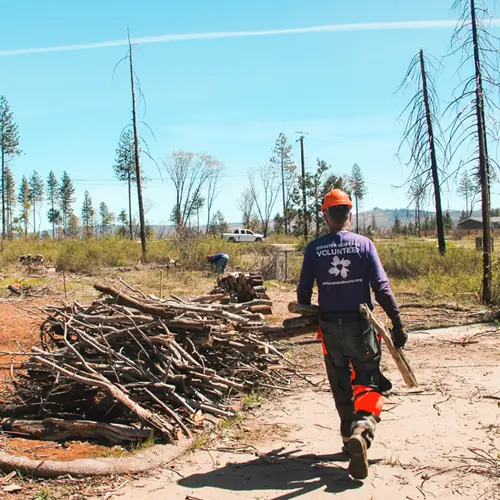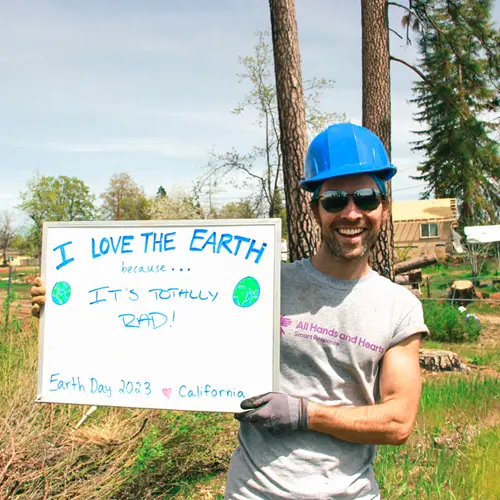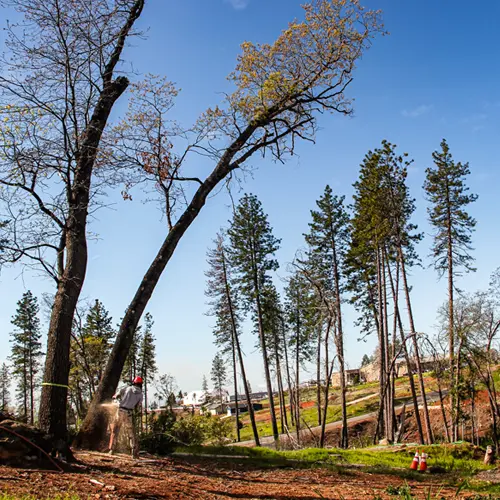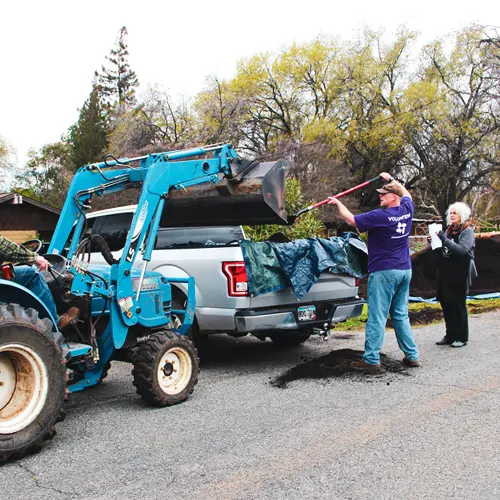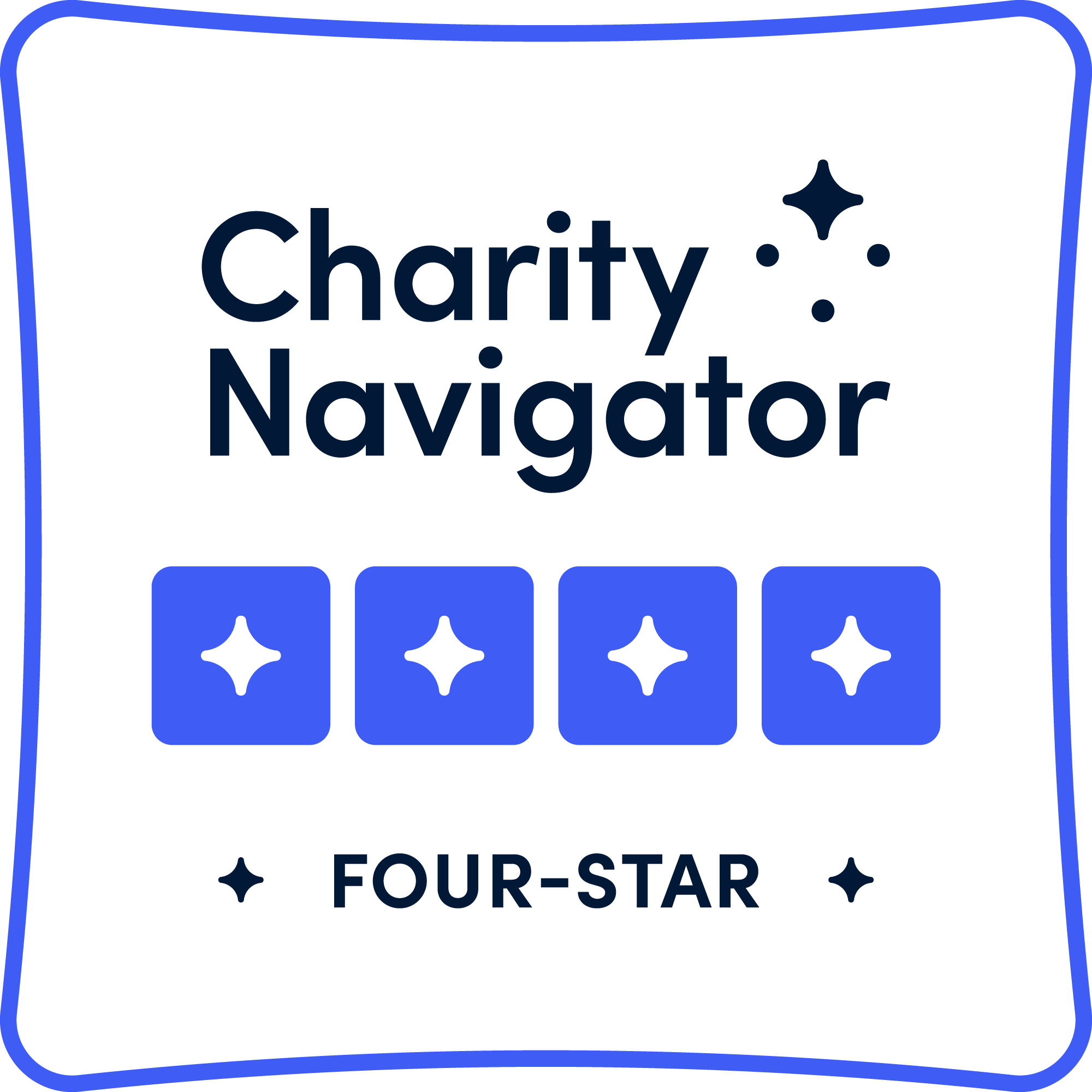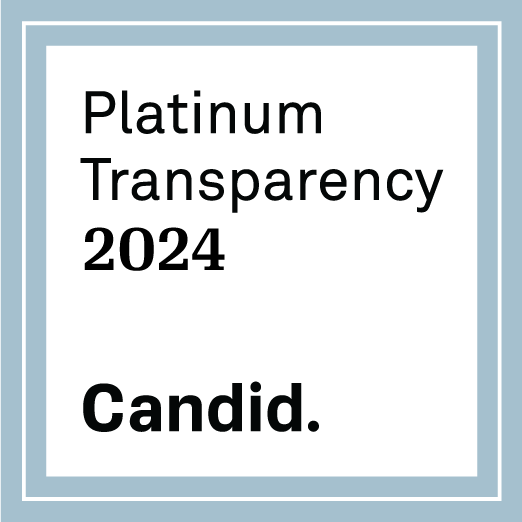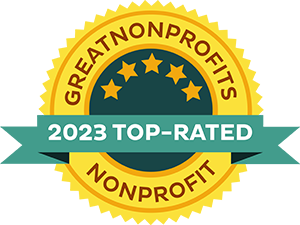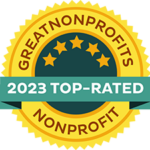California Wildfire Relief
February 2021 – January 2025
All Hands and Hearts (AHAH) is responding to the most destructive wildfires in Los Angeles County’s history. We are leading our recovery efforts guided by lessons and expertise gained from previous wildfire responses, where we are prioritizing community needs, collaborating with local partners and committing to long-term recovery.
AHAH has been responding to increasingly frequent and devastating wildfires in California since February 2021, where we’ve supported community recovery efforts while enhancing their capacity to respond to and mitigate the impact of future wildfires.

Our Work
Driven by the climate crisis, wildfires are increasing in intensity and frequency, and the importance of supporting fire-affected and at-risk communities is clear. Our experience in California has revealed significant challenges for socioeconomically vulnerable homeowners in accessing necessary support for recovery and mitigation projects. Greater nonprofit involvement is essential to address this issue, and our goal to provide wildfire relief in the state, year after year, remains firm. From February 2021 to May 2023, AHAH operated four programs, aiding communities affected by the devastating Camp Fire and North Complex Fire by rebuilding homes and assisting in wildfire mitigation.
Disaster Profile
Two of the deadliest and most damaging wildfires in California’s history were the 2018 Camp Fire and the 2020 North Complex wildfire. The 2018 Camp Fire incinerated the town of Paradise and swaths of surrounding foothill communities of Butte County in a single day. The 2020 North Complex Fire, the deadliest of that year, caused further devastation to the communities of Butte County – leveling the rural towns of Berry Creek and Feather Falls. Now, as of January 2025, Los Angeles County faces what are already among the most destructive wildfires in the state’s history.
According to a study released in June 2023, California’s summertime burned area has increased fivefold since 1971. The increase is expected to rise – it could grow by another 50 percent by the year 2050. The climate crisis is considered one of the critical drivers of this trend, with high temperatures and droughts causing dry vegetation and dead trees, which are more susceptible to severe wildfires.
Program Spotlight: Opening Public Spaces
In the spring of 2022, we arranged a “surge project” with Sierra Nevada AmeriCorps Partnership (SNAP), Paradise Recreation and Park District. This project aimed to open up and reduce wildfire fuel in a park near where the Camp Fire and Dixie Fire both started. A group of 24 SNAPs and six AHAH volunteers worked together to construct burn piles, remove invasive flammable weeds and remove hazardous trees. The work allowed for the healthier growth of native willow oaks, which the indigenous Maidu Tribe uses for cultural events. After two days of work, the team made 77 burn piles and felled 30 hazardous trees. Paradise Recreation and Park District said that the group got more done in two days than they could in six months.




